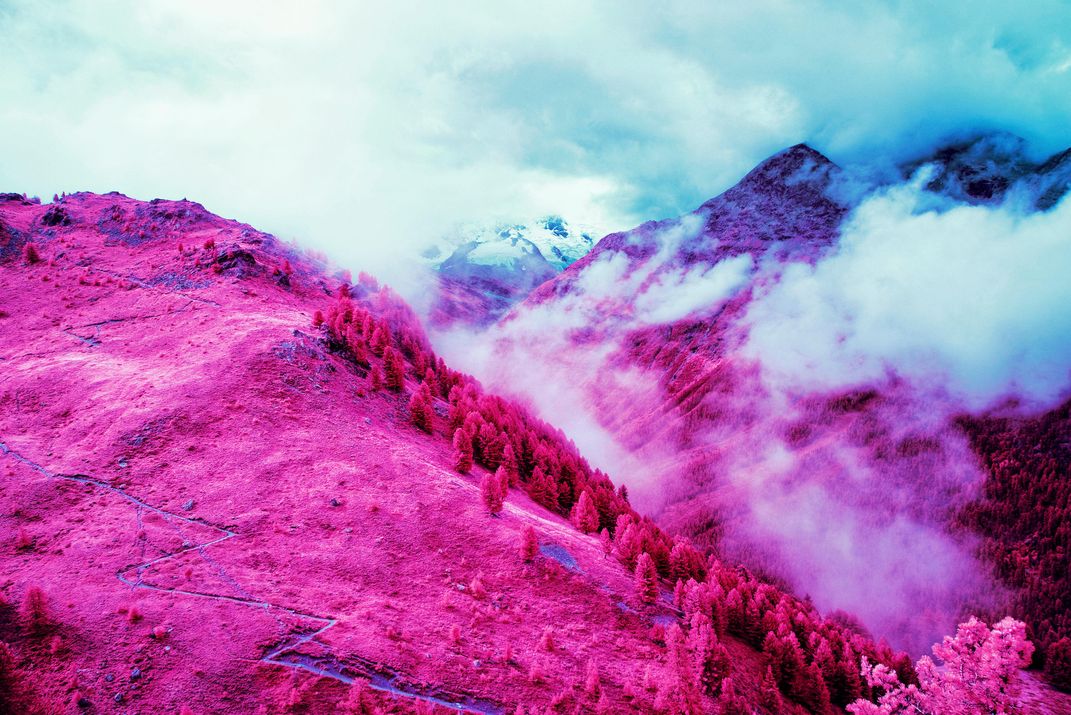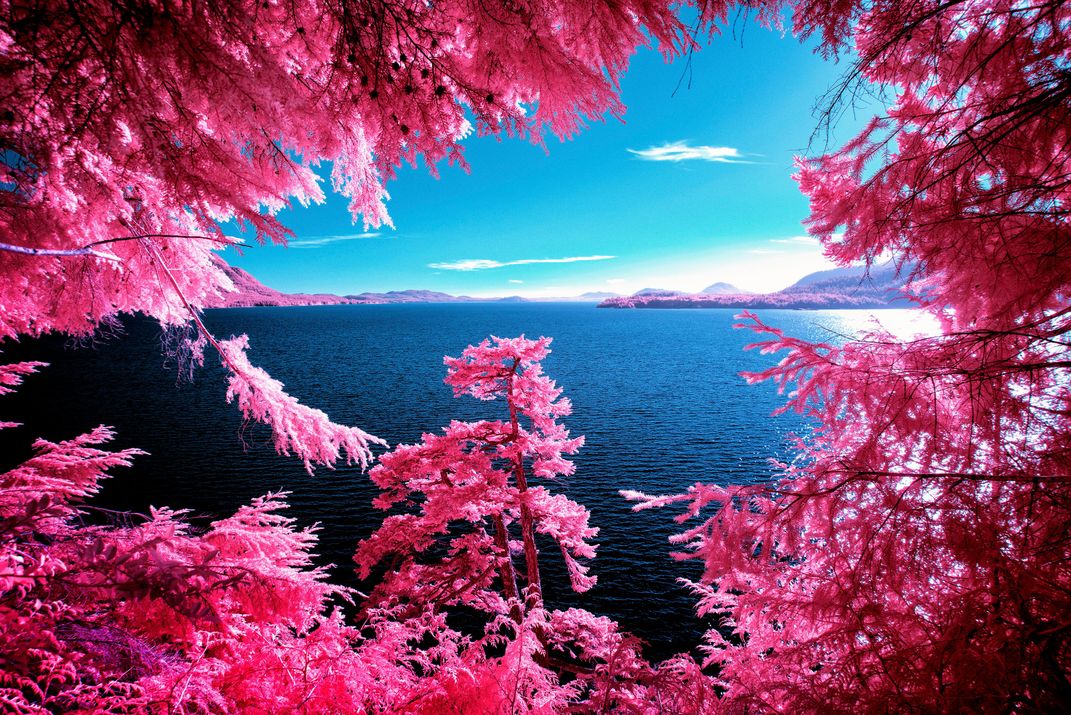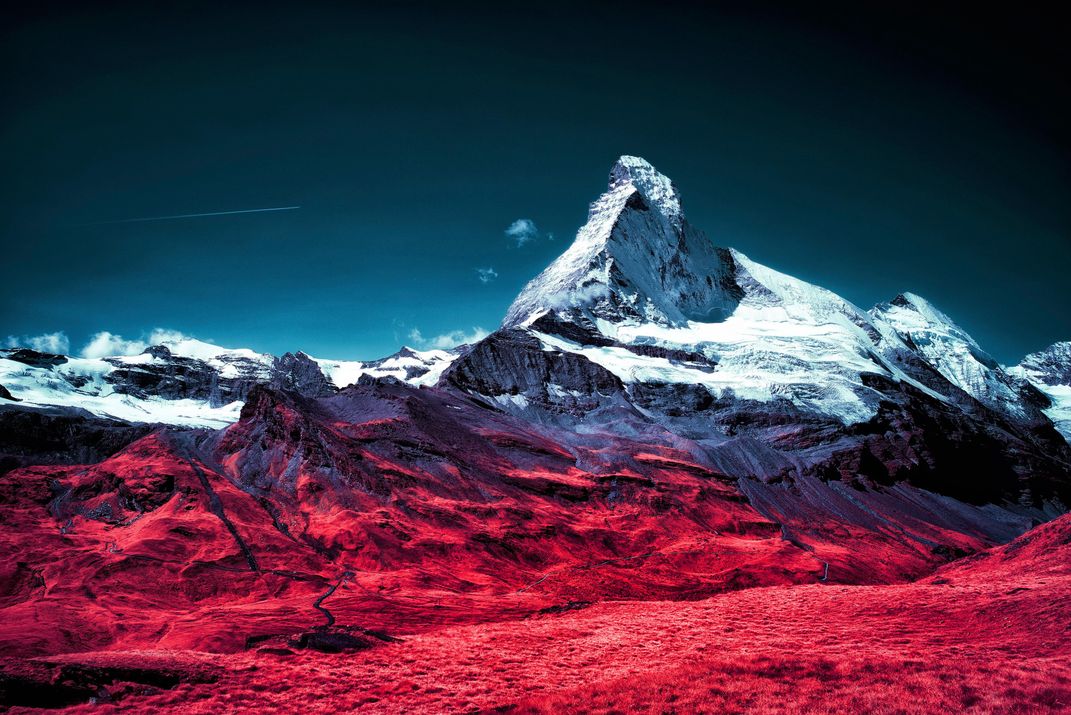Looking at Nature Through Infrared Film Will Have You Seeing Red
See the world on a whole different spectrum
To get a fresh view of nature’s beauty in an era when any iPhone-wielding Instagrammer can publish a stream of lovely landscapes, Zak van Biljon went beyond the visible spectrum. The Zurich-based photographer shot this view of British Columbia’s Kennedy Lake using infrared film. The technique, developed for military surveillance and crop surveys, captures near-infrared light: wavelengths of electromagnetic radiation that fall between what we see as red and the longer wavelengths used for thermal imaging. The healthiest green plants, having more chlorophyll, reflect the most infrared energy, which reacts with infrared-sensitive film to create electric pinks and vibrant reds. Van Biljon’s work walks the line between cutting edge and retro, conjuring a time when photography rewarded patience with revelation. “There’s a bit of a surprise at the end,” van Biljon says, “once you get it and you see the striking colors.”
/https://tf-cmsv2-smithsonianmag-media.s3.amazonaws.com/accounts/headshot/amy.png)



/https://tf-cmsv2-smithsonianmag-media.s3.amazonaws.com/accounts/headshot/amy.png)